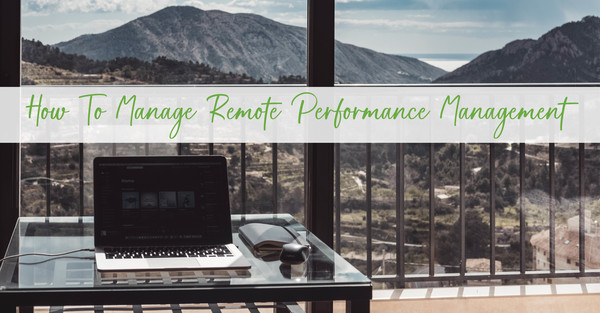Drop off your CV
We serve the global HR community through our offices located in Delhi, Hong Kong, London, New York, São Paulo and Singapore and have placed HR leaders in over 30 countries.
As Covid restrictions gradually lift, there has been much talk in the media about whether em...

As Covid restrictions gradually lift, there has been much talk in the media about whether employers will continue to allow employees to work from home some or all of the time. Downing Street have denied that they will grant employees an automatic legal right to work from home where possible in the future, and so this is a question for individual employers. This will depend on various factors, including the important matter of the nature of the business. In workplaces where arrangements for full-time working from home or some form of hybrid working are implemented, this places a responsibility on managers to implement ongoing measures for effective remote performance management. In this blog we highlight some key areas to focus on:
1. Clear expectations are key to effective performance management whether employees are in the workplace or working remotely. A lack of clear expectations may lead to confusion, disagreements, and frustration. When employees are working remotely, the expectations managers need to set out fall into two broad categories – what does the employee need to achieve, and what does the working day or week look like?
2. When it comes to what people need to achieve, we suggest focussing on output – what does the employee need to do to support the organisation’s wider objectives? Perhaps they need to progress a design for a client, generate a certain number of sales leads, create a report or ensure the payroll is run. If so, they should be clear on what is needed and by when.
3. Regular check-ins via phone or video call to discuss what they are working on can be very beneficial as part of this, and allow for discussion more effectively than email (e.g. any challenges the employee is experiencing). More experienced employees may be very clear on what they need to achieve, and so will be able to report to their manager about what they are working on, whereas newer employees may need more direction.
4. It is also important during check-ins to discuss what has been achieved, again focussing on output – what have they done rather than how did they spend their time achieving it. This enables employees to feel trusted to manage their time, which can have a motivational effect, alongside positive feedback and recognition.
5. The question of what does the working day or week look like should therefore not be a question of micro-managing. However, there may be certain requirements that you have of how employees spend their time, such as joining team calls at certain times, or attending the workplace on certain days if you are operating a hybrid policy. Some roles will require employees to be available at very specific times, such as to ensure availability to answer the phone between set hours.
6. Ensuring employee wellbeing whilst they are working from home may be challenging, as you may not see your team or have the same spontaneous conversations as you would in the workplace. As such, managers should be proactive on this front.
7. Managers may want to ensure that you arrange a mixture of 121 and team communication opportunities (e.g., via Zoom or on days when people physically attend work). This can contribute to the sense that employees are still part of a team even if they do not see each other as much as before and provide a little engagement on social level. If you have a hybrid arrangement, it is important that people working from home do not feel forgotten in comparison to those who regularly attend the workplace, where communication may happen more spontaneously, and so arranging regular virtual wellbeing 121s can be important.
8. During recent lockdowns there have been reports of some interesting working from home set-ups, including using an ironing board as a desk! Employers can’t forget their health and safety duty of care responsibilities for their teams working arrangements – it's their legal responsibility. The Health and Safety Executive (HSE) have provided advice for employers on managing the wellbeing of employees working from home, which is available here:
9. Time-out from work - Employees should also be encouraged to take their usual breaks, such as for lunch, and finish on time, as working from home can blur the boundaries between work and personal lives, leading people to work longer hours in some cases, which may result in burnout. As we are all very aware, the last 18 months have been a time of great uncertainty.
Moving forward, clear expectations and regular communication will be important for managers and employees, as we hopefully transition to a more stable time. If you would like any advice on managing employees remotely, please get in touch with a member of the ViewHR team today for an initial discussion: hr@viewhr.co.uk | +44(0)1425 205390 | viewhr.co.uk.
ViewHR are UK based and provide flexible HR support and guidance combined with employment law consultancy.